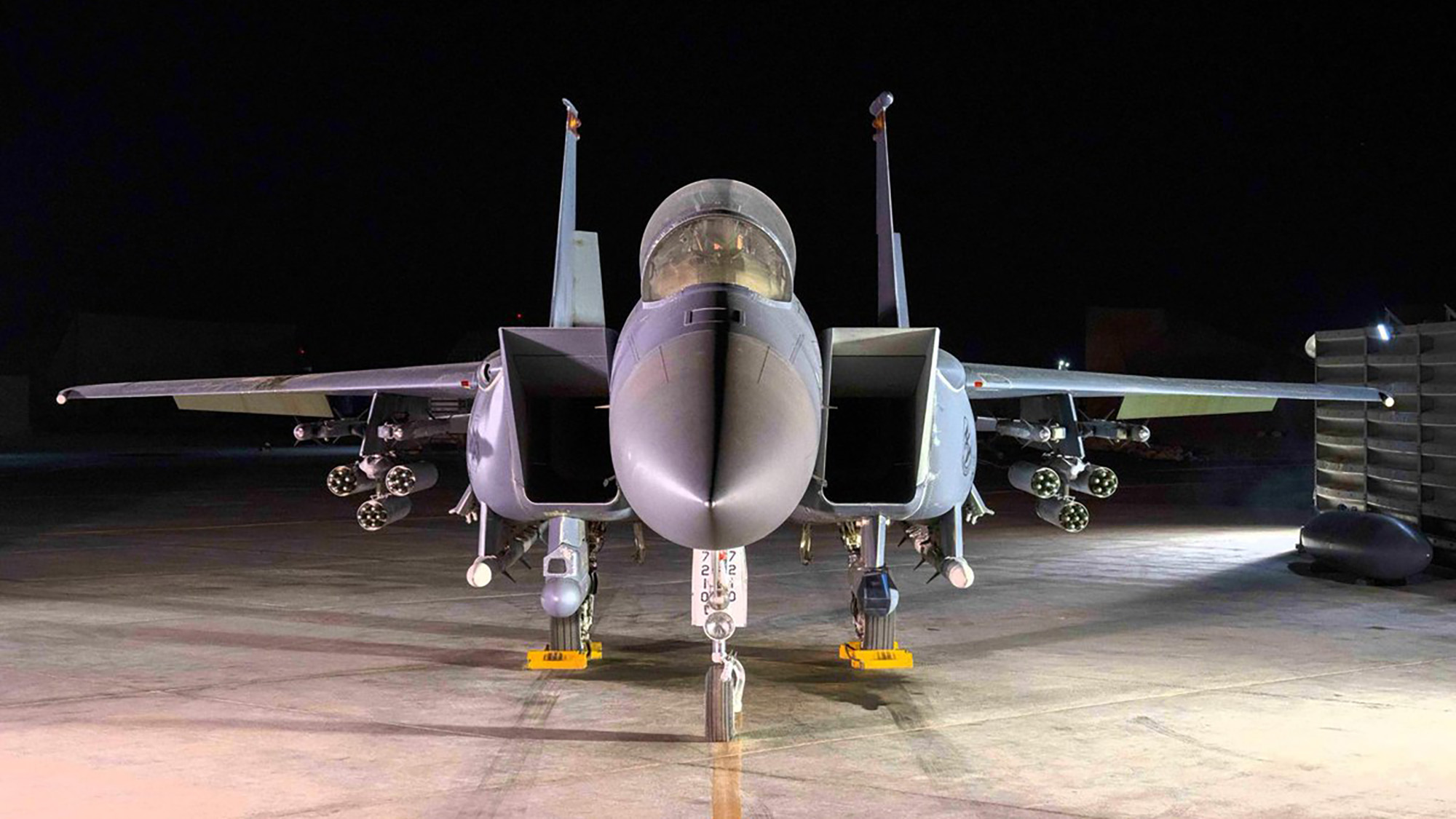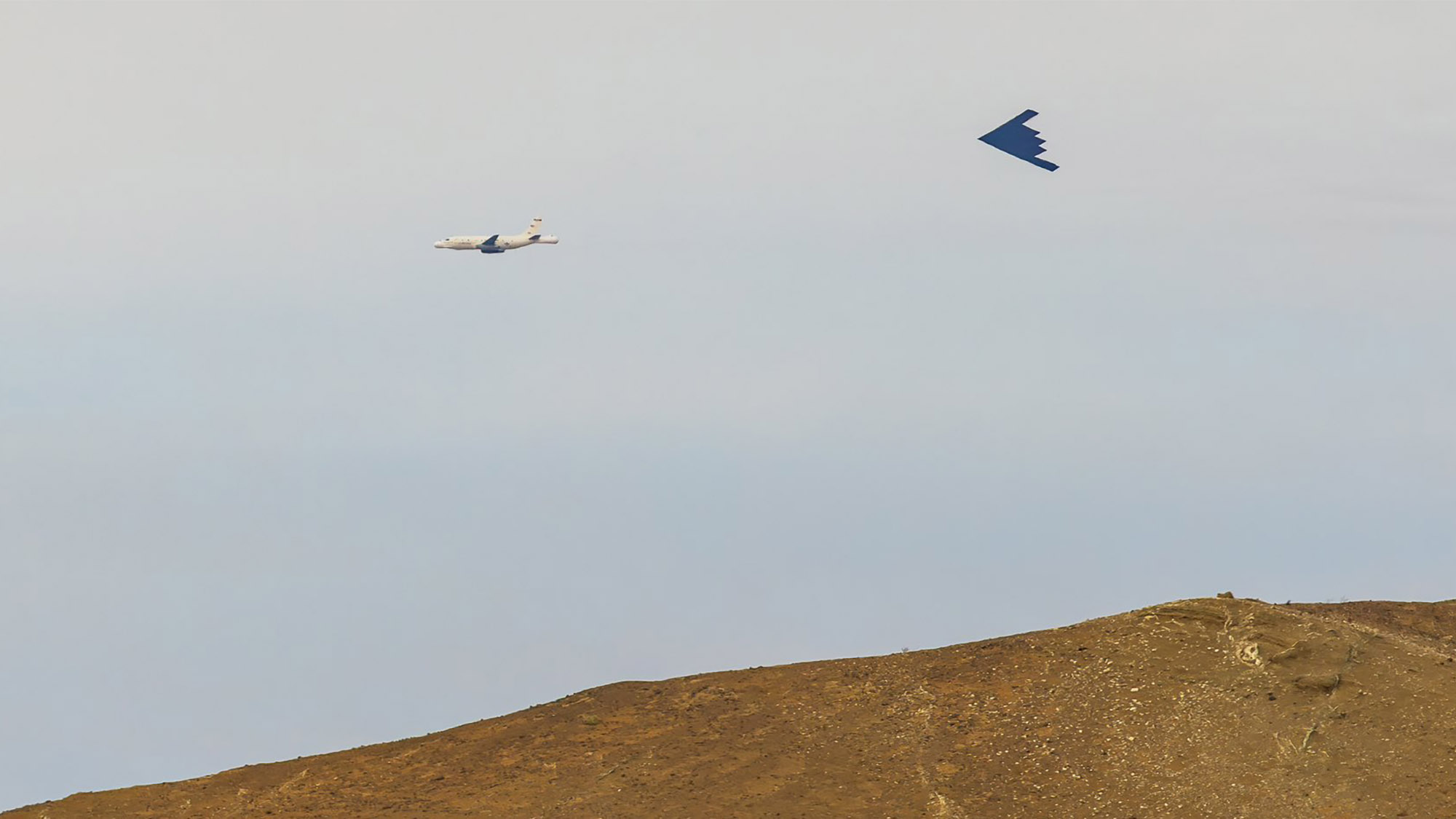Russia’s new Cosmos satellite orbiting near US sat, piques ASAT fears
Based on its orbital pattern, independent astronomer Marco Langbroek said he suspected the new satellite is joining other Russian “sleeping interceptors.”


Russia’s new Cosmos 2588, launched May 23, 2025, is following a US government satellite believed to be NRO’s USA 338. (Image: Marco Langbroek/SatCamTrack Leiden)
WASHINGTON — Russia’s newest satellite in its low Earth orbit (LEO) Cosmos series is in orbit near an unnamed US government satellite, according to US Space Command — further stoking suspicions that the Cosmos satellites are co-orbital anti-satellite (ASAT) weapons rather than simply neighborhood watch birds as Moscow claims.
“U.S. Space Command can confirm Russia’s recent launch put a Russian satellite into an orbit near a U.S. government satellite. Russia continues to research, develop, test, and deploy a suite of counterspace systems that threaten the safety and the stability of the domain, so consistent with all on-orbit objects, USSPACECOM will continue to monitor for concerning behavior or activity related to this launch,” the SPACECOM spokesperson told Breaking Defense today.
While SPACECOM did not name the US satellite being shadowed, the statement came following reports from independent astronomers that the new Cosmos 2588, launched May 23, was put into a coplanar orbit with USA 338. USA 338 is thought by experts to be one of the NRO’s KH-series electro-optical spy satellites, known as the Crystal constellation.
NRO does not provide any information about its spy satellites, other than to register them by a number with the United Nations. Nor are US spy satellites publicly listed in SPACECOM’s satellite tracking database, Space-Track.org.
The Cosmos 2588 launch and its orbital parameters were first reported by independent satellite tracker Bart Hendrix on the NASA SpaceFlight Forum, where space launch watchers and telescope operators collaboratively analyze new satellites.
Marco Langbroek, an astronomer based in the Netherlands, posted on the forum that the new Cosmos seems to be following a pattern set by two previous Cosmos (sometimes spelled Kosmos), suggesting that the satellites have been designed as ASATs.
Unlike the US military’s on-orbit neighborhood watch satellites, the Geosynchronous Space Situational Awareness Program constellation, the last three Russian Cosmos satellites are not moving around in orbit with occasional stops to check out another bird. Rather they are each sitting in the shadow of a US government satellite, all believed to by KH-series spysats.
“This is the fourth time a Russian military satellite is placed co-orbital with a US military optical reconnaissance satellite in five years time. Earlier we had Kosmos 2542/2543 and USA 245; then Kosmos 2558 and USA 326; then Kosmos 2576 and USA 314. The first instance appeared to be an ‘inspector satellite’ mission; but for the second and third, and perhaps this new one as well, I think we should seriously consider that we are perhaps seeing the positioning of a counterspace capacity (a dormant co-orbital ASAT weapon),” Langbroek wrote.
He told Breaking Defense that both Cosmos 2558 and Cosmos 2576 are still co-planar with USA 326 and USA 314 respectively, and that their orbital parameters seem to have been chosen deliberately to enable them to keep shadowing the US satellites over time.
“To me, staying in the same orbital plane for 2+ years does not indicate they are ‘inspector satellites’ — what more is there to ‘inspect’ after 2+ years? Rather, I strongly suspect they are sleeping interceptors, to be activated when necessary,” he added.
One US space tracking expert, who spoke under the condition of anonymity for fear of getting ahead of the SPACECOM, largely concurred with Langbroek’s assessment.
“I think that has moderate to high probability of being correct,” he said.
US satellite tracking firm Slingshot Aerospace posted a tracking photo of Cosmos 2588 Thursday on LinkedIn.
“According to Slingshot Seradata open-source information, COSMOS 2588 is thought to be a NIVELIR military inspection satellite with a suspected kinetic weapon onboard. Seradata also reports that COSMOS 2588 may be focusing on USA 338. Since no public catalog orbital states exist for USA 338, this may be the co-planar uncatalogued object Slingshot is currently tracking,” the company post read.
A Slingshot spokesperson told Breaking Defense that in its current orbit, Cosmos 2588 will pass as close as 93.9 kilometers ( 58.3 miles) from its target.
“As the objects are at different altitudes and assuming there are no further maneuvers, the objects will have a ‘fly-by’ roughly every 4 days, leading to repeated close approaches,” the spokesperson said.
“We continue to monitor COSMOS 2558, which is co-planar with USA 326, as well as COSMOS 2576, which is believed to have ASAT capabilities. We will closely monitor COSMOS 2588 for the foreseeable future to see if it releases any secondary payloads.”
The spokesperson didn’t say exactly why Slingshot thought the new Russian satellite could be a weapon, but history has made Western astronomers more than a little suspicious.
In 2020, the Cosmos 2543 satellite spat out a high-speed projectile in what US and UK military leaders said was a clear ASAT weapons test. Likewise, when Cosmos 2576 was launched last May, Washington condemned it as an ASAT at a meeting of the UN Security Council.
Moscow has denied the allegations.










































































































































